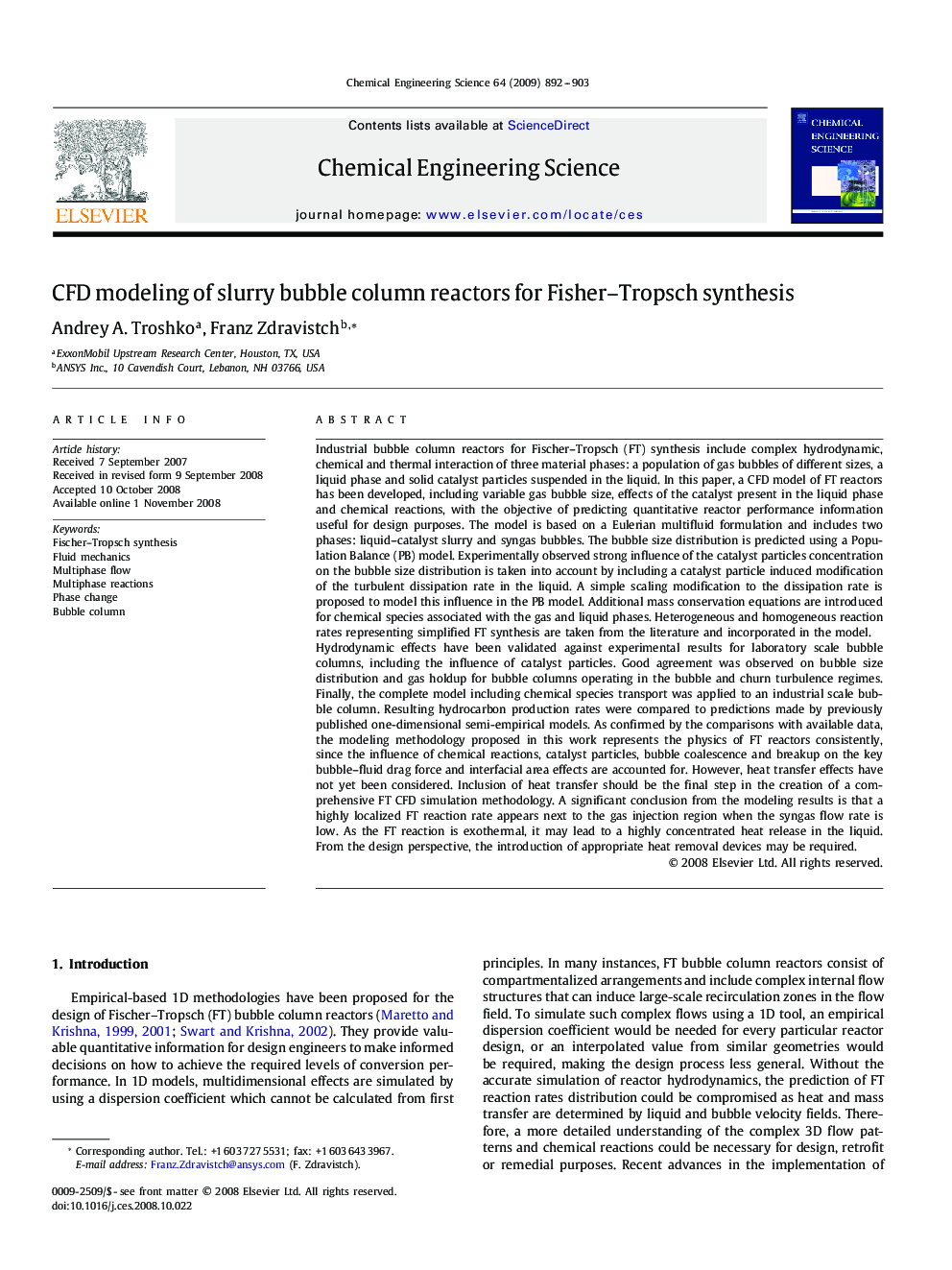| کد مقاله | کد نشریه | سال انتشار | مقاله انگلیسی | نسخه تمام متن |
|---|---|---|---|---|
| 157633 | 456979 | 2009 | 12 صفحه PDF | دانلود رایگان |

Industrial bubble column reactors for Fischer–Tropsch (FT) synthesis include complex hydrodynamic, chemical and thermal interaction of three material phases: a population of gas bubbles of different sizes, a liquid phase and solid catalyst particles suspended in the liquid. In this paper, a CFD model of FT reactors has been developed, including variable gas bubble size, effects of the catalyst present in the liquid phase and chemical reactions, with the objective of predicting quantitative reactor performance information useful for design purposes. The model is based on a Eulerian multifluid formulation and includes two phases: liquid–catalyst slurry and syngas bubbles. The bubble size distribution is predicted using a Population Balance (PB) model. Experimentally observed strong influence of the catalyst particles concentration on the bubble size distribution is taken into account by including a catalyst particle induced modification of the turbulent dissipation rate in the liquid. A simple scaling modification to the dissipation rate is proposed to model this influence in the PB model. Additional mass conservation equations are introduced for chemical species associated with the gas and liquid phases. Heterogeneous and homogeneous reaction rates representing simplified FT synthesis are taken from the literature and incorporated in the model.Hydrodynamic effects have been validated against experimental results for laboratory scale bubble columns, including the influence of catalyst particles. Good agreement was observed on bubble size distribution and gas holdup for bubble columns operating in the bubble and churn turbulence regimes. Finally, the complete model including chemical species transport was applied to an industrial scale bubble column. Resulting hydrocarbon production rates were compared to predictions made by previously published one-dimensional semi-empirical models. As confirmed by the comparisons with available data, the modeling methodology proposed in this work represents the physics of FT reactors consistently, since the influence of chemical reactions, catalyst particles, bubble coalescence and breakup on the key bubble–fluid drag force and interfacial area effects are accounted for. However, heat transfer effects have not yet been considered. Inclusion of heat transfer should be the final step in the creation of a comprehensive FT CFD simulation methodology. A significant conclusion from the modeling results is that a highly localized FT reaction rate appears next to the gas injection region when the syngas flow rate is low. As the FT reaction is exothermal, it may lead to a highly concentrated heat release in the liquid. From the design perspective, the introduction of appropriate heat removal devices may be required.
Journal: Chemical Engineering Science - Volume 64, Issue 5, March 2009, Pages 892–903